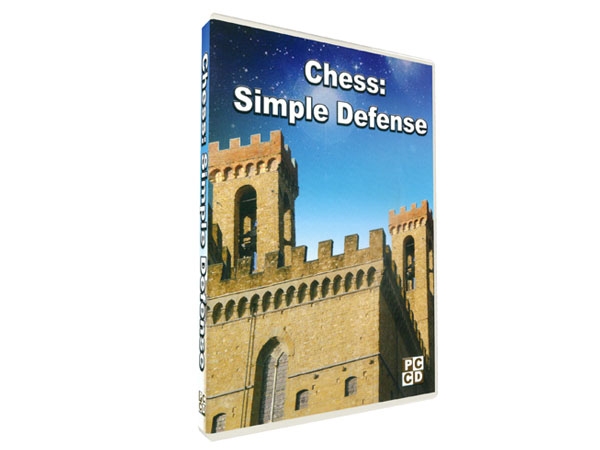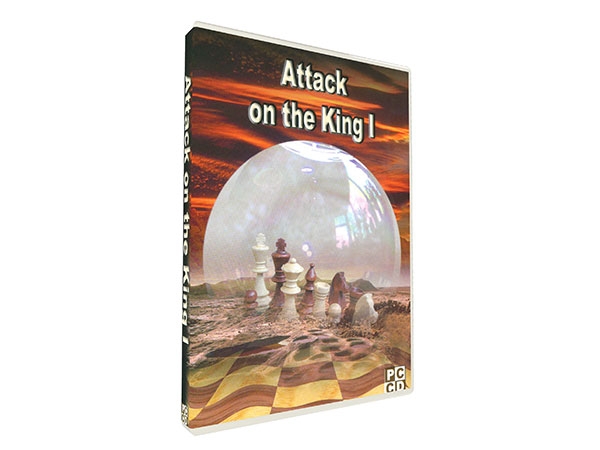Improvement for more experienced novices (600 – 1200 Elo)
Improvement Guide Articles
Here are some articles by GM Alexandra Kosteniuk and chess guru Steve Lopez on how best to improve at chess from different levels. You can come back to this main page anytime.Now that you’re able to easily recall how the pieces move and know their relative values, understand the most basic checkmates, and have some games under your belt, it’s time to move onward to the next stage of your chess development.
It’ll be worth your while at this point to obtain a good computer chess program, particularly one with varying difficulty levels that can “grow with you” as you continue to develop your chess skills. It’s also desirable to have a chess program which can analyze the games you’ve played; although feedback obtained from a digital chess engine isn’t crucial at this stage of your development, it will become highly important when you reach intermediate level in the not-too-distant future.
You’ve already mastered basic checkmates, that is, mates in one move with few pieces on the board. It’s time now to work on checkmates with more material on the board. While you’ll still be concentrating on one-move mates, the additional material on the board will add some complexity to the task: you’ll need to quickly spot the piece which can deliver mate. As you become more and more familiar with these mating motifs, you’ll more easily be able to spot them in your own games.
A crucial component of every chess player’s education is the study of tactics, and now is the time to begin to consider various simple tactical motifs: pins, forks, skewers, pawn promotion sequences – in short, the basic techniques you can use to obtain a material advantage (in other words, how to force your opponent to give up material or how you can make trades which work to your material advantage). It’s also important that you begin with a structured approach to tactical study, to select a particular tactical motif (for example, pins) and solve groups of tactical exercises which use that motif. This structured approach will develop your pattern recognition skills, so that you’ll more easily be able to identify these tactical opportunities when they occur in your games.
It’s also vital at this stage in your development to fully understand the tactical exercises that you solve. When you first begin the study of chess tactics, it’s quality (not quantity) which is important. It’s better for you to study and solve a dozen tactical problems a day in order to completely understand each and every one of them that it would be for you to attempt to solve a hundred puzzles a day with little to no understanding of the tactical motifs involved in any of them. Later on, after you’ve become more familiar with the basic tactical types, it will be more appropriate for you to solve dozens of puzzles every day.
That brings us to another point: daily chess practice is required if you wish to improve as a chess player. You should set time aside each day to solve mate problems and tactical puzzles, and possibly get in a game or two (and this is where a chess program with variable settings will be especially useful to you).
Now is the time to begin the study of endgames in earnest, starting with basic pawn endings and with special attention paid to elementary endgame ideas like the square of the pawn. This endgame study can also be closely tied to your checkmate training, as you’ll be studying how to mate with a King and Queen or Rook against a lone King. Understanding how to promote pawns in the endgame leads directly to the elementary checkmate theme of a King and major piece against a lone King.
This is also a great time to learn basic chess opening principles, the general guidelines which define good opening play. This will elevate your overall level of play because you’ll be able to avoid “digging yourself into a hole” within the game’s first few moves, a hole which you’ll need to laboriously crawl back out of later. The purpose of the chess opening is to reach a playable middlegame position, not to find yourself off-balance in trying to recover from an early error. In addition to learning the general opening principles, this is also a good time to learn the moves of a few specific basic openings. Doing so will not only help you in a practical sense, but it will also serve to illustrate the coordination of the pieces and show you how to make them work smoothly together in the opening.
When you’re ready for a computer chess program, Chess King Gold is a great choice. It lets you play chess against the program at a variety of skill levels (starting at Elo 700 and advancing the whole way up to grandmaster level) in both rated and unrated mode. Chess King also analyzes your games, showing you ways to improve your chess play. Chess King is the ideal training partner, as it contains twenty-five levels of chess exercises (with many exercises at each level), ranging from simple tactics to advanced multi-move combinations. Chess King also helps you learn how to drive home a material advantage through the use of chess quests: more than 100 unlockable challenges arranged in twenty-five levels. Completing chess quests successfully will allow you to “level up” and unlock more difficult challenges.

As for chess courses for use in Peshka, in the range between 600 and 1200 Elo you’ll find three courses to be of special value. Start with the 2,200 exercises in Chess Tactics for Beginners 2.0:

The exercises are divided into groupings of from 6 to 30 problems, with each group designed to be solved in one sitting. You can conveniently learn the tactical basics in small, easy to manage blocks. After becoming proficient with the material in this course, you’ll be ready to move on to Chess Tactics Level One and Chess Tactics Level Two:


Chess Tactics Level One contains 1000 checkmates in one and two moves, conveniently organized in motifs (such as “Few Pieces” and “Many Pieces”). Solving the problems in this course will accelerate your progress to the 1000 Elo level, after which you’ll be ready for Chess Tactics Level Two, which explains more complex tactical motifs using 224 positions complete with annotations. An additional 291 exercises will test what you’ve learned (and Peshka can even hide the notes to the annotated games and randomize the order of the tests, giving you over 500 chess problems to challenge your tactical skills).
You can increase your checkmate skills with Elementary Checkmates II:

This course contains a staggering 77,000 checkmate positions, all of which come from practical play. Although the problems are all checkmates in one move, all of the positions involve many pieces on the board and are intended to develop your “board vision”: the ability to rapidly assess the situation on the chess board.
Another excellent course for use in Peshka is Elementary Chess Combinations:

The 5,000 positions in this course teach elementary tactical themes, such as back rank mates, discovered and double checks, destroying the opposing King’s defense, and pins. Mastering the lessons contained in this course will turn you into a respected chess tactician.
Don’t neglect the defense! Simple Defense will start off your defensive studies on the right foot with 3,000 exercises which will show you how to withdraw or defend your threatened pieces, as well as attacking the opponent’s pieces with a stronger threat:

After you’ve completed the Simple Defense course, you’ll be ready to tackle the 400 positions on Advanced Defense. These are more complex examples taken from actual play and are guaranteed to challenge and instruct you.

After you complete the two Elementary Checkmate courses, you’ll be ready for Attack on the King I:

There are an amazing 33,000 positions in this course, all of which are checkmates in two moves taken from actual games. These exercises will sharpen your eye and increase your confidence in your ability to spot and deliver checkmate.
Finally, Complete Chess Course is an outstanding overview of the skills every beginner and club player needs to master to become a strong chess player:

More than 1,200 examples of proper opening, middlegame, and endgame play are presented clearly and systematically in 55 lessons. Complete Chess Course is a great aid to self-instruction, and is a valuable tool for chess teachers and coaches looking for a structured approach to their own presentations.
Once you’ve reached the 1200 Elo level, it’s time to start thinking about playing regularly at a chess club or online. We’ll look at the next set of skills you’ll wish to master in the next section.































